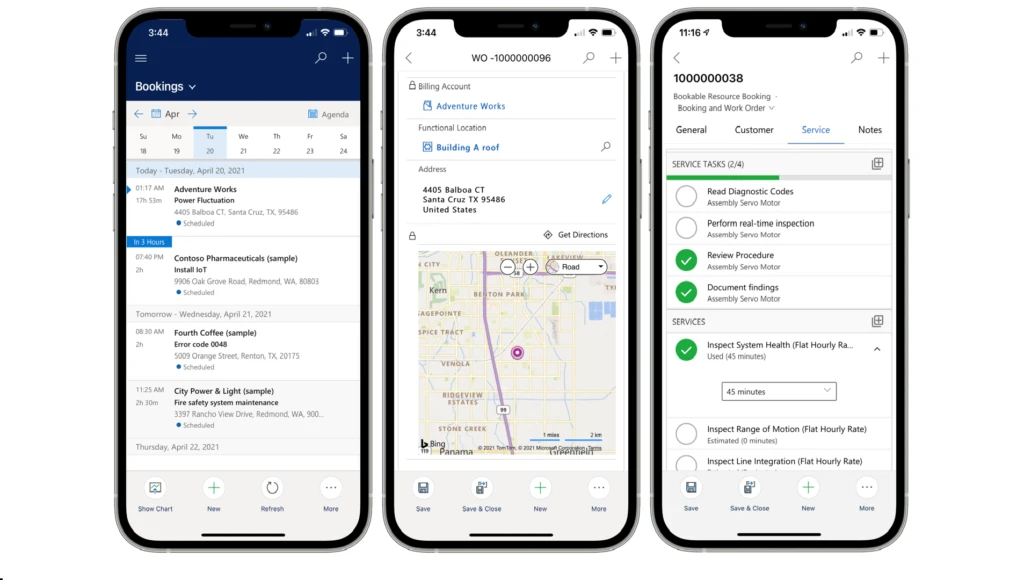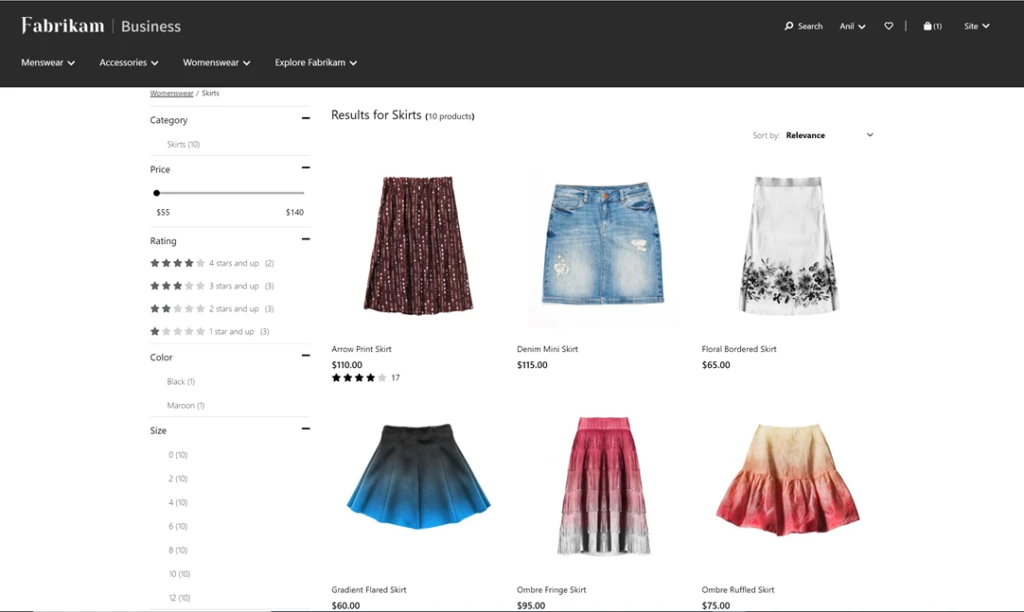In today’s complex economic landscape, your business needs the latest digital capabilities to engage customers, connect people, insights, and processes across the organization, and grow revenues. 2021 release wave 1 for Microsoft Dynamics 365 continues our commitment to continuously deliver capabilities that help you adapt to rapid change in your industry, innovate and solve challenges collaboratively, and harness insights to stay focused on what matters.
Designed to help you build agility and resiliency into every layer of your business, this six-month release wave of new and updated capabilities spans end-to-end customer experience and commerce, including supply chain and finance.
Connected customer experiences
Customer experience is built on consistent and personalized experiencesfrom the customer’s first interaction with the company through purchase and support. Microsoft is committed to helping you deliver personalization at scale, starting with rich insights to better understand preferences and needs, coupled with orchestrated customer journeys that open doors to new ways to attract, engage, and delight customers with a more human and empathetic approach.
Microsoft customer data platform (CDP)
Microsoft Dynamics 365 Customer Insightsthe Microsoft customer data platform (CDP)connects data sources to gain the most comprehensive view of the customer, providing real-time insights that drive action in moments that matter.
This release wave extends audience and engagement insights for a more holistic view of customers. Audience insights enable every organization to unify and understand their customer data to harness it for intelligent insights and actions. Engagement insights enable individual and holistic interactive analytics over web, mobile, and connected products customer journey touchpoints. New turnkey integrations make it easier to share insights with other Microsoft or third-party applications, including Bing Ads, Google Ads, Facebook, HubSpot, Marketo, and many other popular services.
In addition, we’ve added AI-powered suggestions to help segment customers for more personalized messages, as well as features like predicted customer lifetime value and transaction and subscription churn to identify high-value and at-risk customers.
Dynamics 365 Customer Insights works in lockstep with customer journey orchestration capabilities for Microsoft Dynamics 365 Marketing (below) to power even more personalized experiences.
Read more 2021 release wave 1 highlights for Dynamics 365 Customer Insights.
Microsoft Dynamics 365 Customer Voice empowers organizations to easily scale feedback capture for agile responses and personalized customer experiences, all in a robust feedback management solution. The new wave of updates enhances personalization and analysis capabilities, making it easier than ever to understand your customers and build better experiences.
Custom survey headers provide more flexibility and personalization in outreach to customers, while customer survey scoring empowers users to create and unlock the insights that matter to their business.
Read more about updates to Dynamics 365 Customer Voice.
Marketing
New customer journey orchestration capabilities for Microsoft Dynamics 365 Marketing bring together the worlds of customer experience and marketing automation to engage customers in real-time based on interactions across marketing, sales, commerce, and service. And the enhanced cross-journey customer insights and analytics capabilities in Dynamics 365 Customer Insights help create more personalized experiences.
A completely redesigned email editor leverages AI to help you quickly create impactful, professional, and personalized content and deliver it at the right time. And enhanced integration with Microsoft Teams adds new webinar capabilities within Teams and the improved event participant engagement functionalities within Dynamics 365 Marketing.
Read more 2021 release wave 1 highlights for Dynamics 365 Marketing.
Sales
Release wave 1 updates for Microsoft Dynamics 365 Sales showcase the best of Microsoft productivity, collaboration, and intelligence in one business app to guide sellers to close deals faster.
Sellers can automate time-consuming sales tasks, such as creating and sending emails to customers, as well as updating customer records with up-to-date profile data from LinkedIn. Conversational intelligence automatically extracts actionable insights directly from sales calls.
An embedded Teams chat experience allows sellers to share Dynamics 365 information in Teams chats and channels and access linked Teams chats and channels within Dynamics 365. And an optimized seller workspace helps sellers understand pipeline health with out-of-box interactive charts and metrics and course-correct fading deals with AI-driven relationship and opportunity scores.
Explore more 2021 release wave 1 highlights for Dynamics 365 Sales.
Service
New capabilities help customer and field service teams deliver more consistent and engaging experiences, from the call center to on-site visits.
Microsoft Dynamics 365 Customer Service is delivering the all-in-one contact center, now with first-party voice built on Microsoft Azure Communication Services and intelligent, skill-based, and omnichannel routing across channels. In addition, we are enhancing agent productivity capabilities in knowledge management, timeline, email, and agent dashboards.
Microsoft Dynamics 365 Field Service introduces a comprehensive experience for customers that will allow them to self-schedule service and rate technicians to ensure maximum satisfaction. Dynamics 365 Field Service, Microsoft Dynamics 365 Remote Assist, and Microsoft Teams enable field technicians to stay connected to work orders, information, and experts in real-time.
Learn more about updated capabilities to transform customer service and field service.
Connected operations
Complex organizations depend on the seamless flow of data, consistent business processes, and collaboration across finance and operations departments. This release wave further brings together people, data, insights, and processes with cross-app capabilities.
Commerce
Earlier this year, we announced the preview of business-to-business (B2B) e-commerce capabilities for Microsoft Dynamics 365 Commerce, bringing together business-to-consumer (B2C) and B2B e-commerce capabilities onto a single unified retail and commerce platform. The 2021 release wave 1 will further empower Dynamics 365 Commerce users to better understand, serve, and engage with their customers while efficiently running operations across the value chain.
B2B e-commerce capabilities previously in preview are now generally available, bringing intelligent and user-friendly features available to B2C e-commerce retailers to business partners. This release offers partner onboarding, order templates, quick order entry, account statement, invoicing management, and more. In addition, we are delivering native integration to Dynamics 365 Sales and Customer Service for unified customer engagement across touchpoints.
Other enhancements include new AI-powered intelligent shopping features for more personal and relevant shopping experiences, such as the ability to shop similar looks and similar descriptions. We’ve also invested in expanding omnichannel capabilities, including the ability for retailers to notify frontline workers on mobile devices through the Microsoft Teams mobile app.
Retailers will also be able to synergize task management between Dynamics 365 Commerce and Microsoft Teams to improve productivity. And support for curbside pickup scenarios allows customers to pick up orders with a safe, contactless experience.
Retailers can further connect experiences across the end-to-end shopper journey with Microsoft Cloud for Retail, announced at NRF 2021.
Read a comprehensive overview of updates to Dynamics 365 Commerce.
Fraud Protection
Microsoft Dynamics 365 Fraud Protection brings together account protection, payment protection, and loss prevention, providing a 360-degree view of the fraud landscape to merchants.
Two new features significantly improve insights that can help better detect suspicious activity. Velocities help customers prevent loss from fraud by using the relationships and patterns between transactions to identify suspicious activity. External calls let Dynamics 365 Fraud Protection ingest external data from third-party information providers or in-house data models.
Read more about updates to Dynamics 365 Fraud Protection.
Finance
Microsoft Dynamics 365 Finance provides real-time visibility into operations, predictive outcomes, and data-driven decisions that drive business agility and growth.
Release wave 1 brings intelligent cash flow forecasting to preview with automation based on predictive results. These updates include users’ experience out-of-the-box machine learning, including when customers are predicted to pay, forecasting the budget, and viewing forecasted cash positions based on actual accounts payable, accounts receivable and project transactions, and predicted outcomes.
Finance insights bring the power of AI into finance processes, with configurable and extensible models to help you accurately and intelligently predict your company’s cash flow. Globalization capabilities deliver localization for Egypt, general availability of a new electronic invoicing service, public preview of tax calculation service, and several other highly requested features.
Explore the full set of updates in the release plans.
Supply Chain
Major shocks to supply and demand over the past year have exposed the fragility of the global supply chain. Moving forward, organizations must architect resiliency into their supply chains with the capacity to scale operations to meet demand and proactively remedy disruptions, as well as streamline order fulfillment.
We are introducing new capabilities to ensure a smooth-running production line and improve day-to-day work on the factory floor. The new Cloud and Edge Scale Unit add-ins for Microsoft Dynamics 365 Supply Chain Management enable companies to easily scale production and distribution during peaks and keep critical processes running at high throughput on the edge.
Additional updates increase the visibility of inbound goods and automate landed cost calculation, streamline and automate rebates and royalties, help overcome disruptions by managing changes in process manufacturing master data, and improve overall warehouse operating efficiency.
Read how these updates help you architect resiliency into your supply chain.
Microsoft Dynamics 365 Intelligent Order Management, announced at Microsoft Ignite, is a new application that can help accelerate omnichannel transformation across order and fulfillment. It provides the flexibility companies need to capture orders from any order source, including e-commerce, marketplace, mobile apps, or traditional sources like electronic data interchange (EDI).
Service-based operations
Microsoft Dynamics 365 Project Operations unifies operational workflows to provide the visibility, collaboration, and insight needed to drive success across teams from sales to finance. Updates in release wave 1 deliver rich new experiences with the ability to forecast, use, and invoice non-stocked materials on projects. Also included is the ability to set up contractual commitments like billing methods and chargeability rules by task or by work breakdown schedule. Customers using Microsoft Dynamics 365 Project Service Automation will be able to upgrade to Dynamics 365 Project Operations.
Read more about updates to Dynamics 365 Project Operations.
Business management for small and midmarket organizations
Microsoft Dynamics 365 Business Central provides a connected cloud business management solution for growing small to medium-sized businesses (SMB), bringing together finance, sales, service, and operations teams within a single application. Updates in this release wave help you adapt faster, work smarter, and perform better. New customer onboarding capabilities provide getting started checklists and in-app contextual guidance to help speed time to productivity for employees. Improved interoperability with Microsoft Teams, Microsoft Word, and Microsoft Excel empowers a more collaborative, productive organization. In addition, this release wave expands availability to more countries, including India, Greece, Romania, and Turkey.
Discover the latest innovations for Dynamics 365 Business Central.
Human Resources
Microsoft Dynamics 365 Human Resources provides HR leaders with the tools needed to optimize workforce programs such as leave and absence, benefits, and compensation, as well as transform the employee experience with self-service. A new app for Microsoft Teams enables employees to view time-off balances and submit leave requests from within the unified collaboration workspace they already use. The app has been enhanced to include support for benefit notifications and a summary statement providing a consolidated view of benefits for employees. Other updates continue to broaden the human capital management (HCM) ecosystem through integration APIs and strategic partnerships.
Learn more about new and planned capabilities for Dynamics 365 Human Resources.
Catch up on the 2021 release wave 1
For a complete list of new capabilities, please review the Dynamics 365 and Microsoft Power Platform 2021 release wave 1 plans, as well as the overviews of new capabilities for Dynamics 365, integrated Microsoft Teams experiences, and new Power Platform capabilities announced at Microsoft Ignite in early March.
The post Highlights from 2021 release wave 1 for Dynamics 365 appeared first on Microsoft Dynamics 365 Blog.
Brought to you by Dr. Ware, Microsoft Office 365 Silver Partner, Charleston SC.











Recent Comments